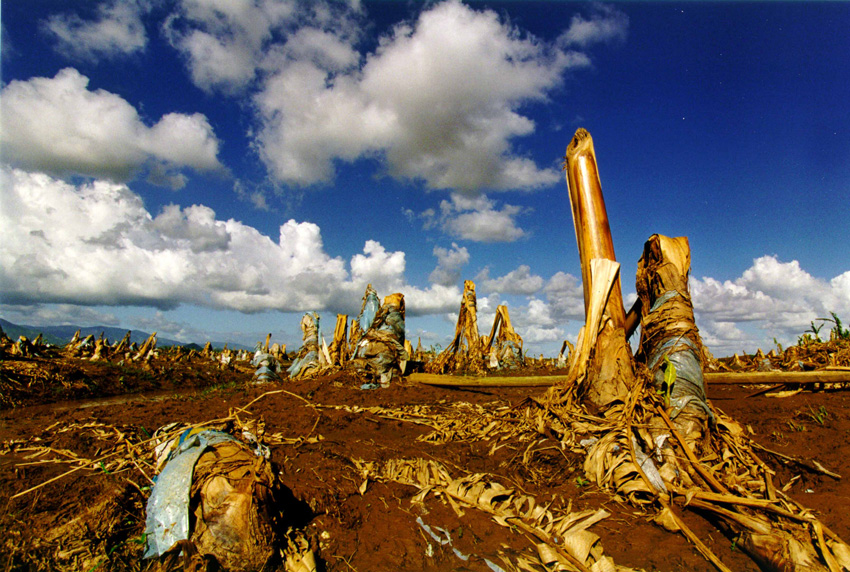Climate, Carbon, and Human Health
Water Quality
Climate change affects human health by impacting the quality and safety of both our water supply and recreational water. As the earth’s temperature rises, surface water temperatures in lakes and oceans also rise. Warmer waters create a more hospitable environment for the growth of some harmful algae, bacteria, and other microbes that make humans sick. For example, Vibrio parahaemolyticus is responsible for diarrheal illnesses linked with consuming raw or undercooked oysters from the Gulf of Mexico. Vibrio vulnificus causes vomiting, diarrhea, and abdominal pain in healthy adults and is the more severe of the two, believed to be responsible for most of the seafood-related deaths in the United States. Both can also cause serious infections through contact with contaminated water while swimming. Naegleria fowleri (sometimes referred to as a “brain-eating ameba”) is a microbe that can be present in soil and warm freshwater. It usually infects people when contaminated water entera the body through the nose. Infections of these microbes are occurring farther north, and warming waters may increase this risk.

Algal blooms, like those shown here, endanger human health, the environment, and economies.
Changes in Vector Ecology
Vectors in this case are organisms such as fleas, ticks, and mosquitos that can transmit a pathogen or infectious agent from one host to another. Climate change has the potential to increase the risk of vector-borne diseases and thus impact human health. Since warmer average temperatures can mean longer warm seasons, earlier spring seasons, shorter and milder winters, and hotter summers, conditions might become more hospitable for many carriers of vector-borne diseases.
Lyme disease is a concern since the development and survival of ticks, their animal hosts (such as deer), and the bacterium that causes the disease are all strongly influenced by climatic factors, especially temperature, precipitation, and humidity. Currently, most occurrences of Lyme disease in the United States are in the Northeast, particularly the state of Connecticut. An expansion of the geographic area in which ticks can survive may lead to more people having contact with infected ticks. In regions where Lyme disease already exists, milder winters result in fewer disease-carrying ticks dying during winter. This can increase the overall tick population, which increases the risk of contracting Lyme disease in those areas.

Climate change has the potential to increase the risk of vector-borne diseases and thus impact human health.
West Nile virus is another example of a vector-borne disease (primarily through mosquitos) that may be influenced by climate change. Preventing people from contracting West Nile virus is important because there are no medications to treat or vaccines to prevent this virus in humans, and recovery from severe disease may take several weeks or months.
Environmental Degradation, Food, and Water Supply
If climate change impacts are severe enough in particular areas, then it will degrade the ability of those areas to be productive and even habitable. There have already been observed impacts in the United States on food production and water supply being interrupted, sometimes for extended periods, following extreme weather events. Other places around the world are experiencing more severe impacts. These include malnutrition due to food shortages and diarrheal diseases, such as cholera, due to clean water scarcity and damaged sanitary systems. In the most extreme cases, they lead to forced migration, as happened following Hurricane Katrina in 2005 and elsewhere in the world in refugee camps. When resources needed to support lifestyles become scarce, civil conflicts often erupt, and indeed are already happening in other parts of the world. All of these conditions can impact the psychological and mental health of the people involved.

Image courtesy of World Health Organization
If climate change impacts are severe enough in particular areas, it will degrade the ability of those areas to be productive and even habitable.
While this information from the CDC and APHA paints a dire picture, the agencies also recognize that many communities are already taking significant and appropriate steps to address these issues head on. These efforts are usually contained under the umbrella of sustainability or resiliency for communities but are directly focused on reducing GHGs and preparing to bounce back from the impacts of future weather events and related climate change impacts. In so doing, they are addressing the public health issues associated with climate change and actively reducing the potential for harm to people.
Finding Solutions: Recognizing Impacts
We have already noted the significance of the building sector in contributing to GHG emissions, particularly carbon dioxide, both in embodied carbon and operational carbon. It has been observed that 13–18 percent of the total embodied carbon footprint of any construction project is released the year the project is built or installed.3 Further, 100 percent of the total embodied carbon footprint of any landscape project is released during construction. Many green building experts, including Architecture 2030, make the point that these embodied carbon emissions are already impacting the climate when the building opens. Hence, it is even more urgent to address than operational carbon, which is addressable over the life of the project, typically 30 to 80 years. Operational carbon can be reduced through energy conservation, renewable energy use, and system efficiencies, but embodied carbon has already been released to the atmosphere.
Recognizing the significance of buildings and their carbon footprints is the first step in finding solutions. So is understanding the relative successes that have been observed or calculated in buildings.
Impact of the Green Building Movement
Over the past 20 years, the creation and evolution of green building programs such as LEED, GreenGlobes, the WELL Building Standard, the Living Building Challenge, Passive House, and others around the world reflect the fact that green and sustainable building is not just a trend or fad but a well-entrenched movement within the design and construction industry. Further, it is being demanded of building owners, whether for business reasons, philosophical support of their missions and values, or simple economics. It would be reasonable then to ask what the impact of this movement has been, and for our purposes here, how public health has been impacted. A team of researchers at the Harvard T.H. Chan School of Public Health’s Environmental Health Department in Boston conducted a study to determine just that. Its findings were published in January 2018 in the Journal of Exposure Science & Environmental Epidemiology in a research article titled “Energy savings, emission reductions, and health co-benefits of the green building movement.”4
This team of researchers retrieved both the floor space and designed energy efficiency of the LEED-certified projects in six different countries (the United States, China, India, Brazil, Germany, and Turkey). These six countries represent major regions around the world and account for 82 percent of LEED-certified floor space. The study included buildings certified during the years 2000–2016 representing a total of 335 million square meters of floor space. Data was obtained from the Green Building Information Gateway (GBIG) operated by the U.S. Green Building Council (USGBC).
With this information in hand, the researchers then applied Harvard’s Co-Benefits of the Built Environment (Co-BE) Calculator to determine energy cost savings, emission reductions, and health co-benefits for each country studied. Their work included establishing baseline energy-use intensity (EUI) of conventional commercial and institutional buildings for each building location. They compared those baselines to the EUI of LEED-certified buildings to determine annual energy savings for each fuel source. Then they translated energy reductions into emission reductions for GHGs (CO2, CH4, and N2O) and selected air pollutants (particulate matter, SO2, and NOx). Lastly, annual health co-benefits were calculated using the Clean Power Plan (CPP) and Social Cost of Atmospheric Release (SCAR) methodologies.
Their findings from this work included the following:
- “Based on modeled energy use, we estimate that LEED-certified buildings have yielded $13.3 billion ($9.8–$16.6 billion) in energy cost savings and health co-benefits between 2000 and 2016. $7.5 billion of this total comes from savings on energy in green buildings compared to conventional buildings. Another $1.40 billion ($0.43–$2.17 billion) comes from averting 33 megatons (MT) of CO2 emissions and their associated climate damages. Lastly, emissions of SO2, NOx, and PM2.5 were reduced by 51, 38, and 10 kilotons (kt), respectively, by green buildings compared to conventional buildings, accounting for the remaining $4.35 billion.”
- The U.S. health benefits derive from avoiding an estimated 172–405 premature deaths, 171 hospital admissions, 11,000 asthma exacerbations, 54,000 respiratory symptoms, 21,000 lost days of work, and 16,000 lost days of school.
- These co-benefits come from only 3.5 percent of the total commercial building floor space in the United States as of 2016, hinting at the potential for energy-efficient buildings to benefit climate and health.
Based on the extent and breadth of the positive impacts of green buildings, they further concluded that the health co-benefits of energy-efficient buildings should be considered during the drafting of policy, the design of new buildings, and the operation of existing ones.









